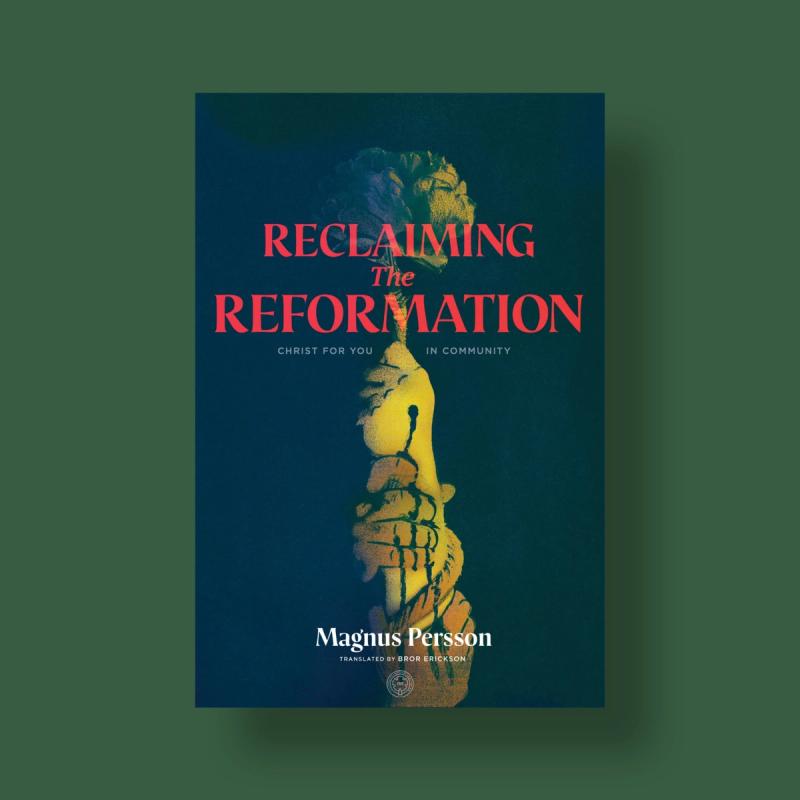***
1517 Publishing | 2021 | 224 pages (paperback) | $21.85
Magnus Persson, a successful pastor in the charismatic church for many years, is now a minister in the Swedish Evangelical Lutheran Church. How did that happen? In Reclaiming the Reformation, Persson answers that question en route to offering a larger call to reformational Christianity. Persson structures the book around the perennial question: “What is central to the church and what are its most important marks?” (xi). He takes his cues from Luther’s 1539 “On Councils and the Church,” which laid out seven marks “that constitute and characterize the church where Christ is present and active: the Word, Baptism, the Lord’s Supper, the Keys, the Office, the Divine Service (worship), and the Cross” (xii–xiii).
In the book’s first section, Persson urges Protestants to recover their evangelical catholicity, since “the reformers . . . wanted to reestablish the genuine evangelical tradition.” Following Gustaf Aulén, he sees the “great break with the church’s catholicity” not in the Reformation but “in the new Protestantism . . . that began during the eighteenth century [as] church art was whitewashed and the liturgy truncated. The Lord’s Supper became ever more rare and finally fell into oblivion. The average contemporary Protestant too often turns away from such things that, according to the reformers, belonged to the church’s great treasure and were seen as common Christian property” (12). Contemporary Protestantism’s aversion to such things reveals the need to recover the sacramental nature of the church, where God’s grace “is proclaimed and mediated through the Word, the table, and baptism” (21). Churches with an “individualistic private Christianity where one emphasizes the ‘personal relationship to Jesus’ as that which constitutes the Christian life” tend to turn “one’s search for justification and piety inward” and stand in stark contrast to “the objective words of promise that are mediated through the Scriptures and sacraments” (23–25).
Persson then addresses each of the seven marks, starting with the word of God purely taught and rightly preached. “When the church neglects the biblical story of creation and the fall, the story of Jesus risks being turned into a moralistic improvement program which puts forth Jesus as a role model rather than as a savior” (57). Thankfully, “the historical and common Christian liturgy has been formed precisely for this reason, so that the great story and the gospel message should not be lost but proclaimed through all that is said and done in the church’s worship service” (58). This is one of the book’s consistent themes: that “what happens in worship exposes our theology” (158). Forms of worship “slowly but surely shape our thoughts, hearts, and actions” and “convey a message that either strengthens or weakens the gospel. The forms we use are therefore never neutral. They carry and mediate a message in themselves and shape us accordingly” (167). He concludes that historic liturgical forms most clearly “root us into the whole biblical story of salvation” (169).
Persson then turns to how the word is concretized. In baptism, “we are thus united in Christ across all borders; neither time nor space, ethnicity, gender, nor class are any longer markers of our deepest identity” (81). Similarly, “the Lord’s holy meal gives form to the whole gospel and makes faith physical and concrete. . . . The focus flees from us to God’s work through Christ; he comes to us and enters us from without. It is not about evoking feelings in the soul or about more knowledge in the head, but about actions that are repeated and which the gospel incorporates itself within the body” (107–8).
Next comes an exploration of the keys (confession and absolution) and the office of the ministry. He sees confession as a key tool of the seelsorger (clergy) in comforting “the guilt-laden conscience” with the “freeing power of forgiveness,” and he concludes that “this mark of the church needs to be reestablished so that miserable and plagued souls can be freed and experience God’s forgiveness and grace” (116, 120). The keys conjoin with the office of the ministry, which should “not be reduced so that the pastor becomes some sort of comforting uncle, social worker, lecturer, or a general project leader” (143). Such an office is not one of power and privilege, but one of sacrifice and suffering. This cruciform pattern is the final mark of the church that Persson unpacks using Luther’s theology of the cross as “the interpretive screen through which the whole of our existence can be understood” (178).
Amid such a vigorous defense of the Reformation, a unique element surfaces in Persson’s vision for “a warm and bold Pentecostal spirituality that is deeply rooted in a solid reformational theology, formed and expressed by a common catholic liturgy and missional ecclesiology” (xv). He is sympathetic to “the charismatic renewal [finding] paths into the different historical churches” where now “charismatic expressions exist side by side with the sacramental life” (32–33). Persson argues for a distinction between the Schwermers (enthusiasts), whom Luther harshly critiqued, and proper charismatic expression, suggesting that Lutheranism is “sound and stable ground for a . . . spirituality that is both sacramental and charismatic” (39). This seems to be an uphill argument. Persson is right that “for Luther there was not a single area in the church and a not a single theological aspect where the Holy Spirit’s activity was not fundamental” (39). But didn’t Luther see the Spirit’s activity as never divorced from the word and external means? Consider Luther’s 1526 Trinity Sunday sermon: it is “the Spirit who reveals Himself in the external office which we hear and see, namely, in the preaching office of the Gospel and of the Sacraments. We are to seek the Spirit not without and apart from the external signs, but know that the Spirit wants to work in, through, and with the external signs and office” (Luther’s Works, vol. 78: Church Postil IV [St. Louis: Concordia, 2015], 37–40).
Persson distances himself from charismatic excesses and makes it clear that “the reception of the Holy Spirit is . . . not a ‘second step’ that follows salvation” (42). Yet his overall argument embracing certain aspects of the charismatic movement and his interpretation of relevant scriptural texts seems unpersuasive. This, however, shouldn’t diminish the overall thrust of the book.
In Reclaiming the Reformation, one finds a warm and robust vision of how the principles of the Reformation can help build thriving churches and thick community around Christ’s word and gifts. Persson’s convivial tone and wide range of denominational experiences make this a book that should be right for a wide variety of readers.
Joshua Pauling is a classical educator and head elder at All Saints Lutheran Church (LCMS) in Charlotte, North Carolina. He studied at Messiah College, Reformed Theological Seminary, and Winthrop University.








